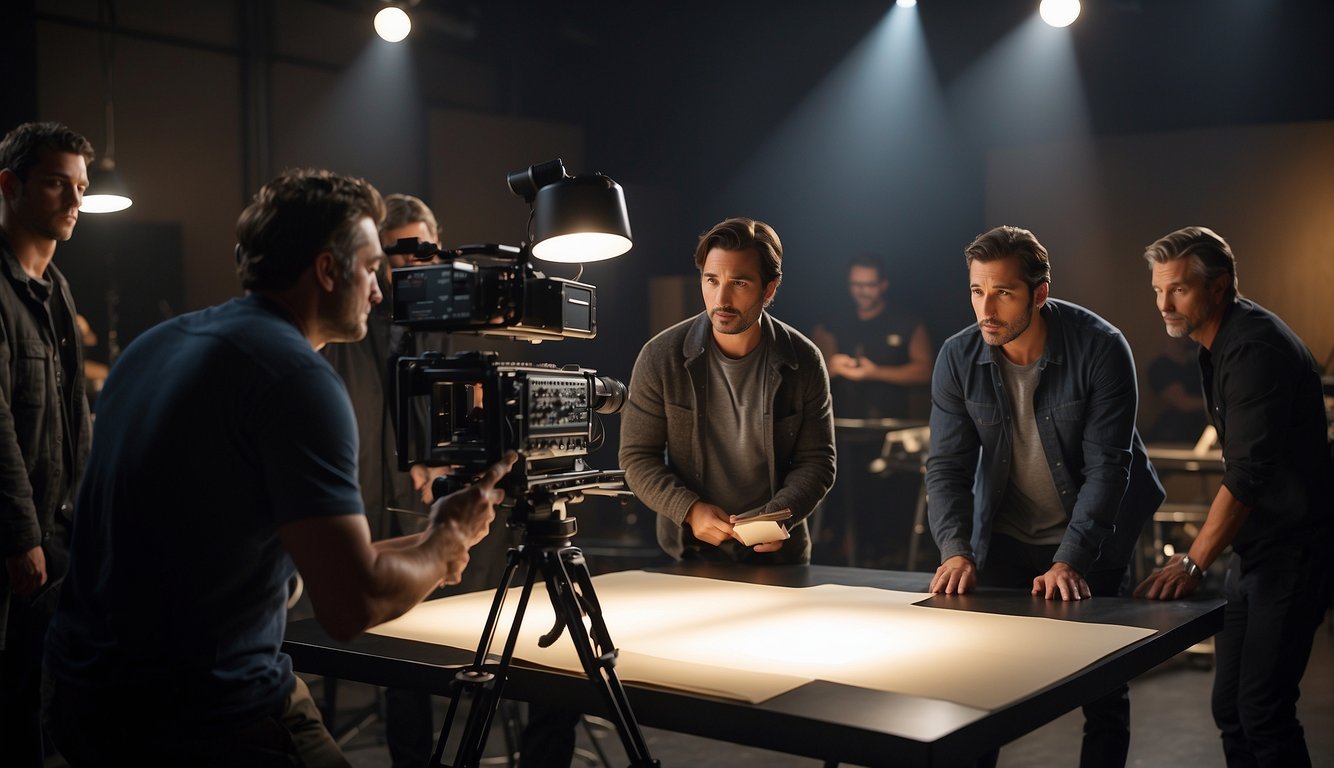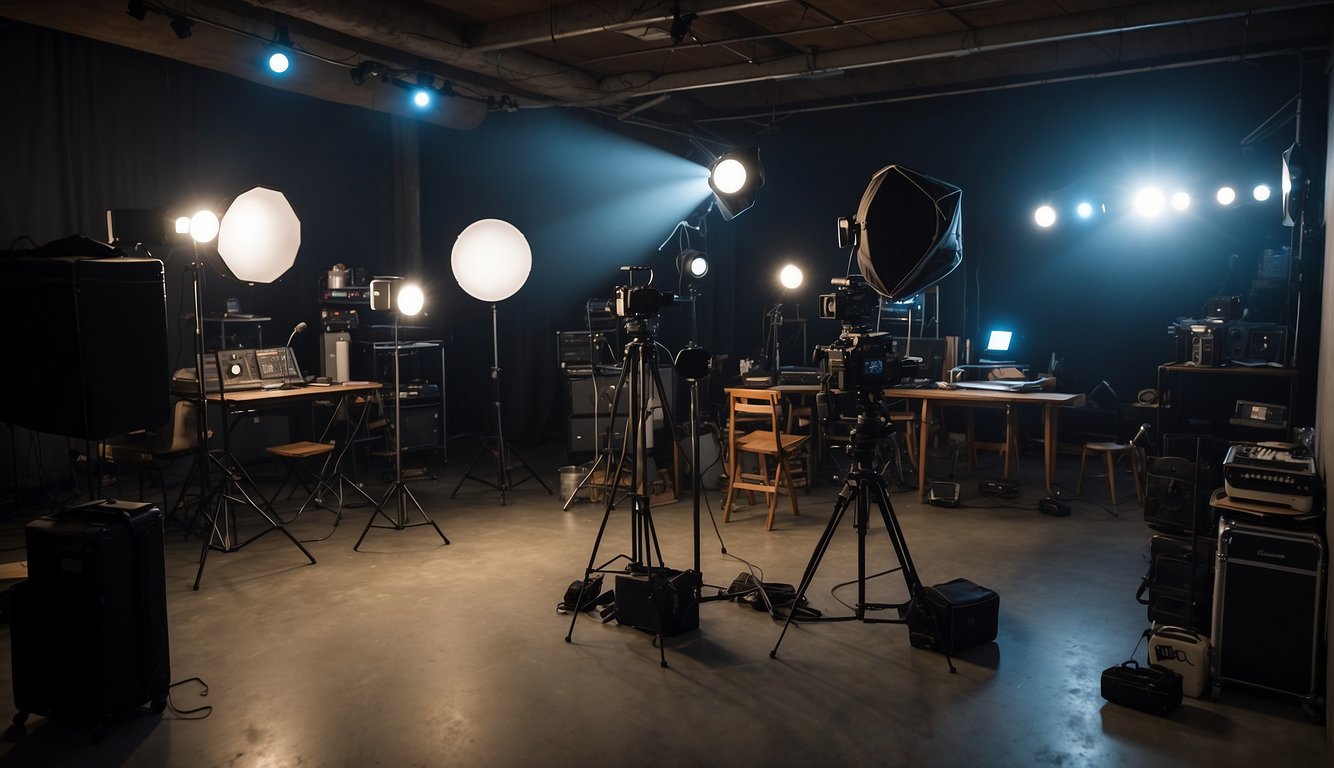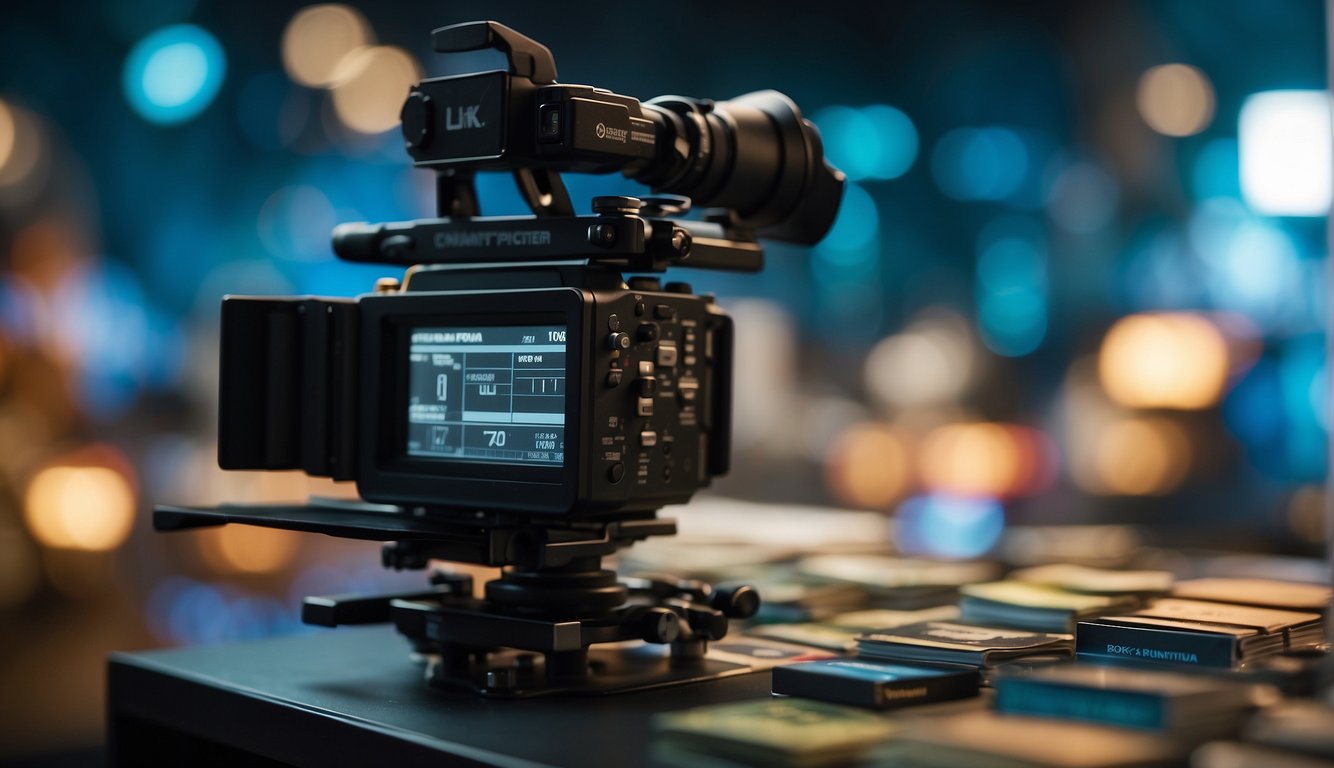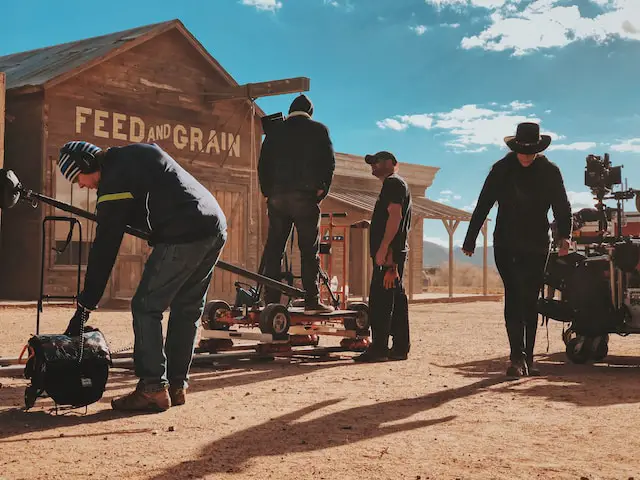If you’ve ever wondered how movies are made, you’re not alone. The process of creating a film can be complex and involve a lot of different stages.
In this article, we’ll look at the various stages of film production and what goes into making a movie.

The first stage of film production is pre-production. During this phase, filmmakers develop the film’s concept, write the script, and plan the production logistics.
This might involve scouting locations, casting actors, and creating storyboards to help visualize the scenes.
Pre-production is critical because it sets the foundation for the rest of the film’s development. Without a solid plan, the production could easily run into issues later.
Table of contents
Concept and Development

When making a movie, the first stage is always the concept and development phase. This is where the idea for the movie is generated and developed into a script that can be used to secure financing for the project. Here are the three main aspects of this stage:
Idea Generation
The idea for a movie can come from anywhere – a book, a news article, a personal experience, or even just a random thought.
The key is to develop an idea that is unique and compelling enough to capture the attention of audiences and investors alike. Once you have your idea, you need to flesh it out into a story that can be turned into a script.
Scriptwriting
The script is the backbone of any movie and attracts the attention of producers and investors. The scriptwriting process involves turning the story idea into a detailed screenplay that includes dialogue, action, and description. This can be a long and challenging process, as the script needs to be polished and refined until it’s ready to be pitched to potential investors.
Securing Financing
Once you have a polished script, the next step is securing the project’s financing. This involves finding producers and investors who are willing to put up the money to make the movie.
Producers oversee the production process, from hiring the cast and crew to managing the budget and ensuring the film stays on schedule.
On the other hand, investors provide the project funding and expect a return on their investment once the movie is released.
Overall, the concept and development stage is crucial to the success of any movie. It’s where the idea for the film is generated and developed into a script that can be used to secure financing for the project.
By carefully crafting the story and ensuring the necessary funding, you can set your movie up for success from the beginning.
Pre-Production

Before the cameras start rolling, a lot of work goes into making a movie. This is known as the pre-production stage.
In this stage, the production team is assembled, the script is developed, and the shoot’s logistics are planned.
Casting
One of the first tasks in pre-production is casting. The director and producer work together to choose the actors to bring the characters to life. This involves holding auditions, reviewing headshots and resumes, and meeting with potential cast members.
Location Scouting
Another important task in pre-production is finding the right filming location. The production team will scout various locations to find the perfect setting for the story.
This could involve traveling to different cities or countries to find the ideal backdrop for the film.
Storyboarding and Planning
Once the cast and location are chosen, the next step is to create a storyboard and shooting schedule.
Storyboards are visual representations of each shot in the film, which helps the director and cinematographer plan out the shots they want to capture. The shooting schedule outlines the order in which scenes will be filmed and when each actor will be needed on set.
Budgeting and Scheduling
Finally, pre-production involves creating a budget and schedule for the film. The producer will work with the director and production team to determine how much money will be needed for the shoot, including equipment, crew, and other expenses. The schedule will outline how long the shoot will take and when each scene will be filmed.
Overall, pre-production is a crucial stage in the filmmaking process. It sets the foundation for the rest of the production and ensures that everything runs smoothly once filming begins.
Production

Once the pre-production phase is complete, the actual filming of the movie begins. This phase is known as the production phase. The movie is shot according to the shot list and script during this phase. Here are some of the key aspects of the production phase:
Principal Photography
Principal photography is the stage where the actual filming of the movie takes place. The director of photography and cinematographer work together to capture the shots according to the shot list.
The actors perform their scenes while the camera captures their movements and expressions. The lighting and sound team ensures that the scene is adequately lit and the sound is recorded correctly.
Crew Management
The assistant director is responsible for managing the crew during the production phase. They ensure that everyone is on set on time and that the set is ready for filming.
The production office also plays a vital role in managing the crew. They create call sheets that provide information about the filming schedule and other essential details.
Set Design and Construction
The production designer is responsible for creating the look and feel of the movie. They work with the director to develop the visual style of the movie.
The set design and construction team then brings the designs to life by building the sets. The props team creates and manages the props used during filming.
During the production phase, many challenges can arise. The weather can be unpredictable, and equipment can malfunction. The director and crew must work together to overcome these challenges and ensure the movie is completed on time and within budget.
Post-Production

Once the filming is complete, the movie enters the post-production stage. This is where the raw footage is edited and transformed into a final product. Post-production is a crucial stage of film production, as it can make or break the movie.
Editing Footage
The first step in post-production is editing the footage. The editor will review the raw footage and select the best takes. They will then assemble the footage into a rough cut, which is a preliminary version of the movie. The rough cut is reviewed and revised until the final cut is achieved.
Visual and Sound Effects
Visual and sound effects are added to the movie during post-production. Visual effects are created using computer-generated imagery (CGI) to enhance the movie’s visuals. Sound effects are used to enhance the movie’s audio. They can be added to create a sense of realism or heighten a scene’s emotional impact.
Music and Scoring
Music is an important aspect of the movie. During post-production, the music and scoring are added to the movie. The music is selected to match the mood and tone of the movie. The score is created to enhance the emotional impact of the movie.
Color Correction and Grading
Color correction and grading are used to enhance the movie’s visuals. Color correction is used to adjust the colors in the film to make them more vibrant or to create a specific mood. Grading is used to adjust the contrast and brightness of the movie. It can also be used to create a specific color palette for the movie.
In conclusion, post-production is a critical stage of film production that can make or break the movie. The raw footage is edited during post-production, and visual and sound effects are added. Music and scoring are also added, and color correction and grading are used to enhance the movie’s visuals.
Distribution and Marketing

Once a movie has completed production, it’s time to get it out to the public. This is where distribution and marketing come into play.
Securing Distribution
The first step in distribution is securing a distributor. The distributor is responsible for getting the movie into theaters or streaming platforms.
Producers often shop their movies to different distributors to find the best fit for their project. Once a distributor is secured, they will work with theaters or streaming platforms to schedule release dates.
Marketing Strategy
Marketing is crucial to the success of a movie. A well-crafted marketing campaign can generate buzz and excitement, leading to higher box office numbers or more views on streaming platforms.
A marketing strategy can include a variety of tactics, such as trailers, posters, interviews, and premieres. Social media and the internet have become increasingly important tools for movie marketing, allowing producers to reach a wider audience with targeted ads and promotions.
Release and Premieres
Release dates and premieres are carefully planned events designed to generate maximum exposure for a movie.
A premiere is typically held before the release date, allowing the cast and crew to showcase their work to industry insiders and generate buzz. The release date is when the movie is made available to the public.
Theatrical releases often involve a rollout, with the movie opening in select cities before expanding to a wider release. Streaming releases are typically available worldwide on the same day.
Overall, distribution and marketing are essential components of the movie-making process. They help ensure that movies reach their intended audiences and generate the maximum revenue.
Producers can increase the chances of their movie becoming a hit by carefully planning a marketing strategy and securing a distributor.

